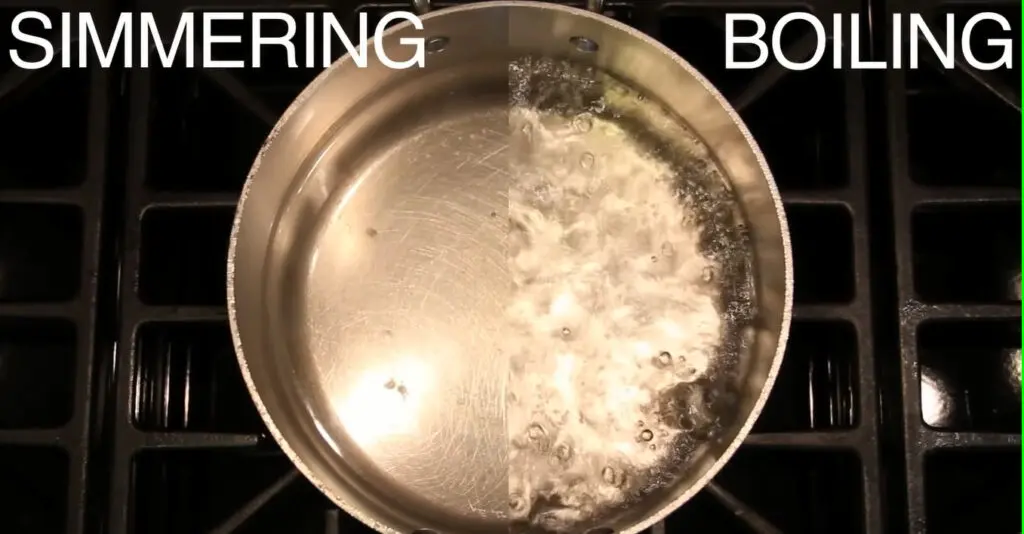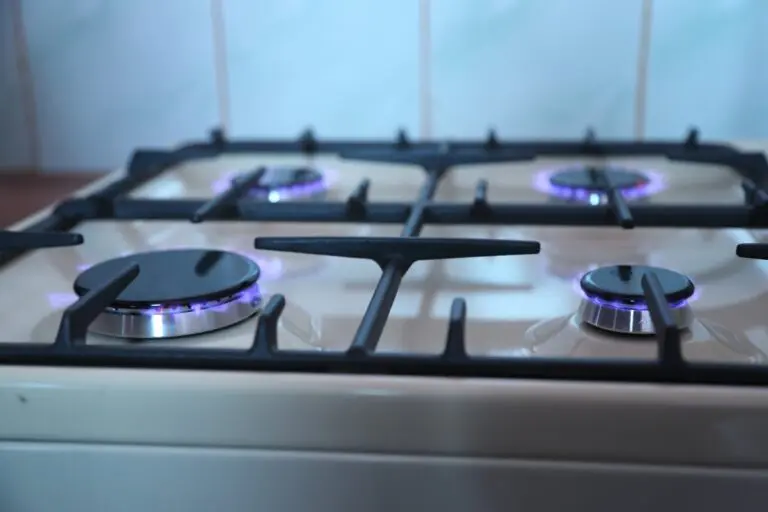What Number is Simmer on a Gas Stove?
What number is simmer on a gas stove? This is a question that I get asked a lot, so I will answer it once and for all in this blog post. Simmering is a cooking technique that uses low heat to cook food slowly. They to successful simmering is to find the sweet spot on your stove where the flame is low enough that the food isn’t boiling and high enough that it’s not just sitting there getting cold. So, what number is simmering on a gas stove? Read on to find out!
What is Simmer on a Gas Stove?
Simmering is a cooking technique that involves cooking food in liquid at a low temperature. This low temperature is usually around 185 degrees Fahrenheit, just below the boiling point of water.
When using a gas stove, simmering is typically achieved by setting the burner to low or medium-low. While simmering is often used for soups and sauces, it can also be used for other dishes like rice or pasta.
The key to simmering is not to let the liquid boil; if it does, the food will likely overcook. Instead, bubbles should intermittently rise to the surface of the liquid and then quickly dissipate.
This gentle bubbling action allows the flavors of the food to meld together and results in a rich and flavorful dish. So next time you make a soup or sauce, remember to keep it at a simmer.
What number is simmer on a gas stove?
Most people probably don’t consider what number corresponds to what setting on their gas stove. But if you’re a chef or someone who likes to cook, it’s important to know how to control the heat of your stove. So, what number is simmer on a gas stove?
- The answer may vary depending on your stove, but simmer is typically somewhere between low and medium.
- On most stoves, low is around 1 or 2, and medium is around 3 to 4. So, a good rule of thumb is that simmer is somewhere in the middle. Of course, it’s always best to experiment with your stove to determine what works best for you.
What is the difference between simmer and boiling?
Simmering starts at about 185°, and you’ll notice very few bubbles coming up to the top of the water. Think of it as low and slow. It’s ideal for potatoes and poaching things like fish and eggs.
Then there’s boiling, boiling happens at 212°, and you’ll notice bubbles constantly rolling up to the surface, and the top of the water is constantly moving. It’s great for pasta and noodles.
The main difference between simmering and boiling is the amount of heat that is being applied. When you simmer, you’re applying low heat over a long period of time, whereas when you boil, you’re applying high heat for a shorter period of time.
As a result, simmering is better for delicate foods that can easily be overcooked, while boiling is better for tougher foods that need more time to cook through.
What number is low simmer on stove?

The best way to achieve simmering is first to boil your food or liquid, then turn the heat down until large bubbles barely break the surface. This is usually between “low” and ” Medium-Low on a gas stove” and around 1-2 is low simmer setting or number on gas stove
As a general rule of thumb, holding your hand an inch or two above the pot without feeling uncomfortable is at a simmer.
If you need to move it away quickly because the heat is too intense, it’s boiling. And if you can keep it there indefinitely without feeling any warmth at all, it’s off. Of course, every stove is different, so it’s always best to start low and adjust as needed.
What Number Is Simmer On Electric Stove?
- If you have an electric stove with 9 knobs, 3 and 4 is the ‘Medium-Low’ heat.
- If you have an electric stove with 6 knobs, 2 and 3 is the ‘Medium-Low’ heat.
- Most models do not have a ‘Simmer’ setting, so you must learn to identify the signs of simmering in a pan of water or food.
what are some tips for maintaining a consistent simmer while cooking?
While there are various ways to simmer food, the basic principle is always the same: cook the food at a low temperature, so it bubbles gently. This gentle bubbling helps to release flavours and aromas while also tenderizing tough cuts of meat.
When cooking on a gas stove, setting the burner at low heat is the easiest way to achieve a consistent simmer. For most stoves, this will be around two or three on the dial. Once the burner is set, place your pot or pan on the burner and wait for it to come up to temperature.
If the liquid begins to boil, reduce the heat until it returns to a simmer. Maintaining a consistent simmer can take a bit of practice, but with patience and trial and error, you’ll be able to cook delicious food that’s full of flavor.
Read Also: What Number Is Simmer on An Electric Stove?
What temperature is simmer 1-10?
On a gas stove, simmer is usually around number 2 to 4. 1 is a low simmer and 10 is a rolling boil. To achieve a simmer, you need to decrease the heat until the water is just barely bubbling.
This low level of heat will ensure that your food doesn’t overcook or burn. When you’re cooking something delicate, like fish or eggs, a simmer is essential to prevent them from falling apart.
However, it’s important to keep an eye on your food while it’s cooking at this low temperature, as it can quickly go from simmer to boil if the heat is too high. If you’re ever unsure about what temperature to cook your food at, a simmer is always a safer bet than a boil.
Stainless Steel Soup Pasta Pot for Strew Simmer Boiling, Heat-proof Handle, Dishwasher Safe
Conclusion
So, when a recipe calls for you to simmer something on the stove, they are asking you to bring it to a low boil. This means that there should be small bubbles constantly coming up to the surface of the liquid, but not so many that it is vigorously boiling.
Simmering is often used in cooking because it allows food to cook slowly and evenly without fear of overcooking or burning. So next time you’re wondering what number to set your stove at for simmer, remember – low and slow!
You might also be interested in our other useful articles.
1. How Much Does A Gas Stove Weigh
2 What happens If You leave an Electric Stove On?
3. How To Clean Gas Stove Top Grates?
4. What temperature is simmer on the stove?







